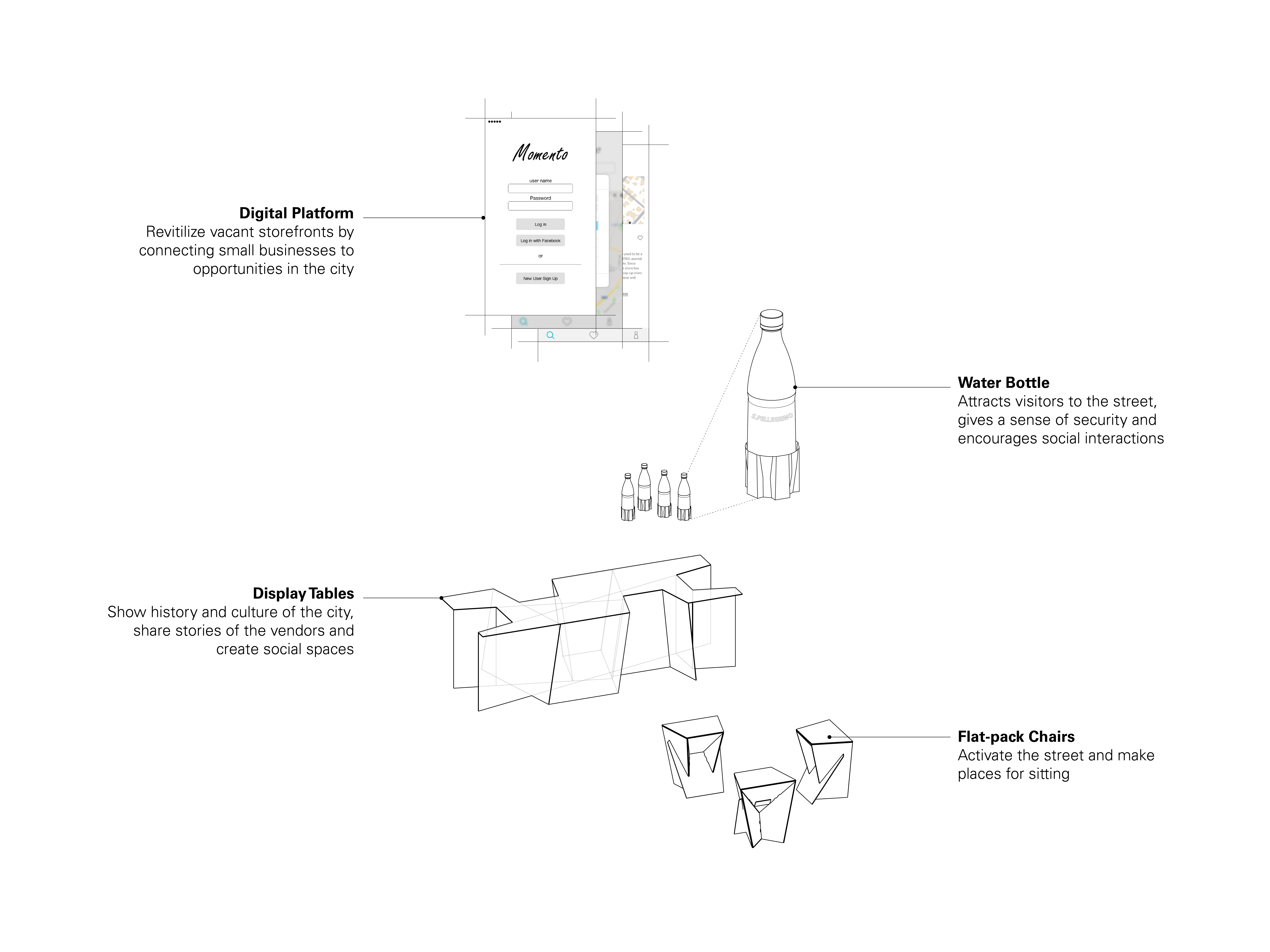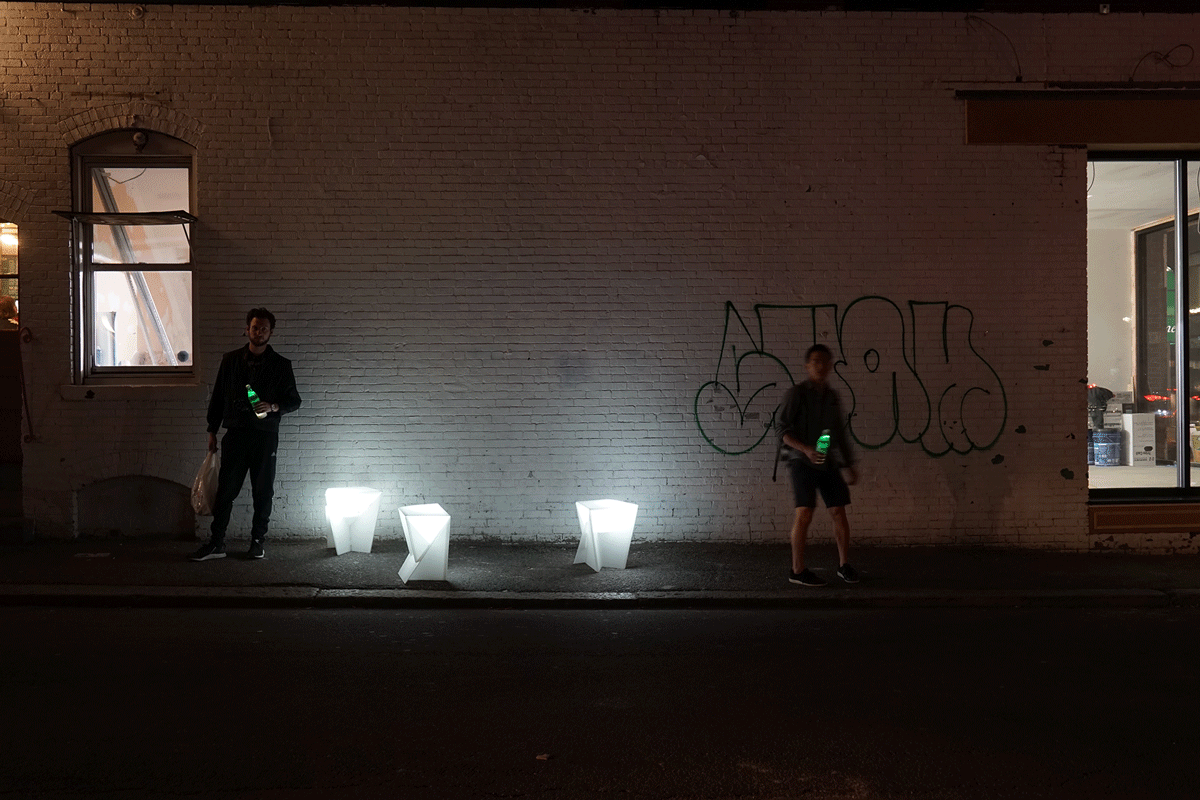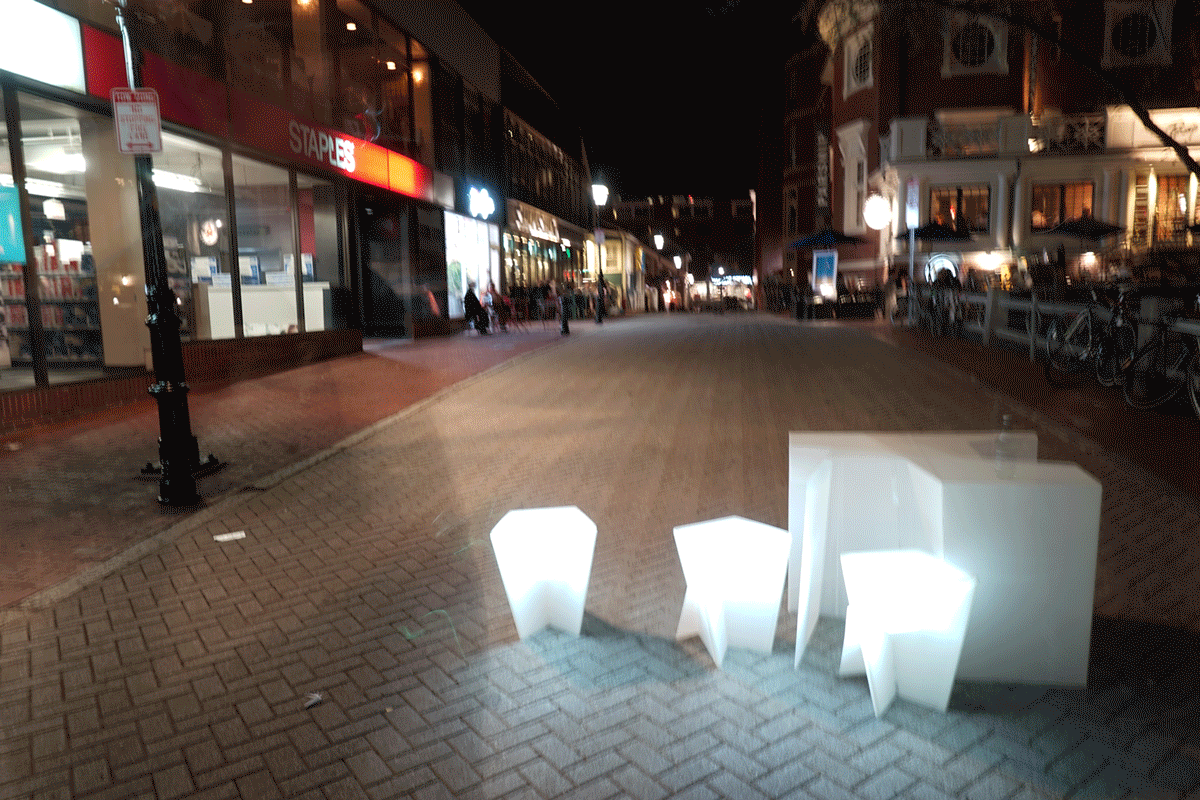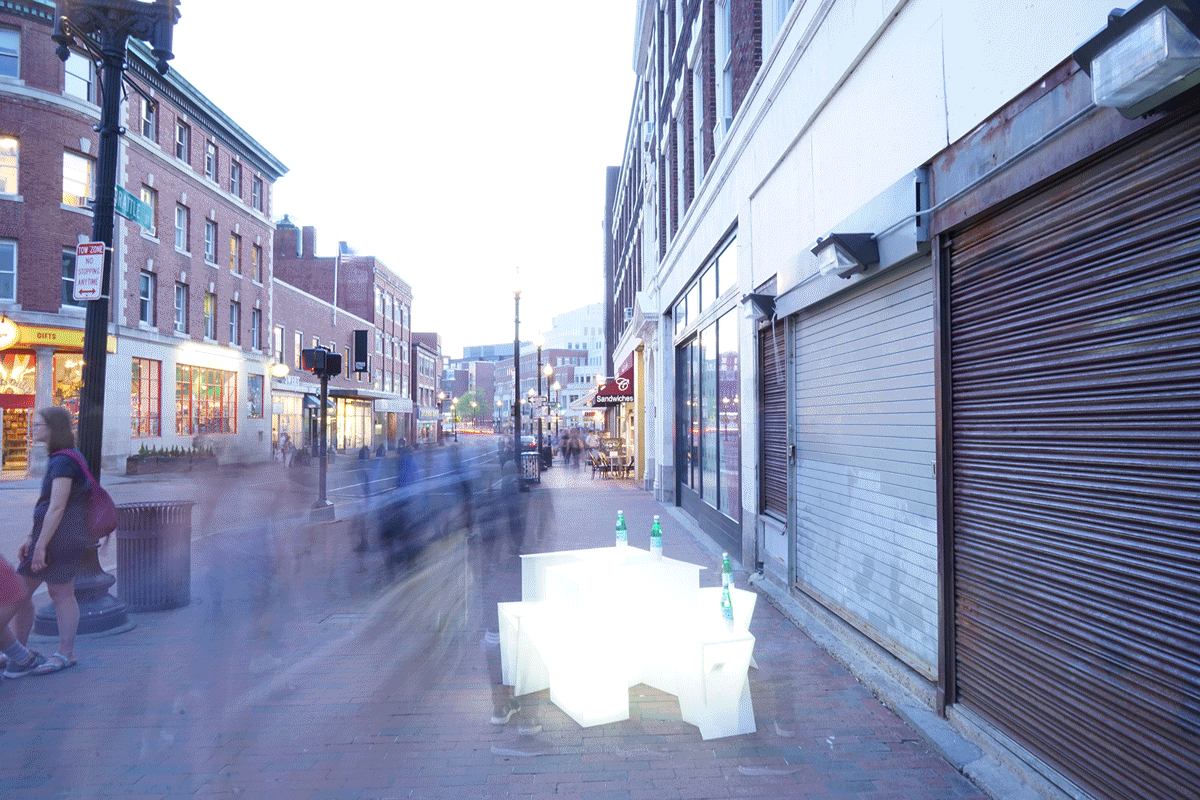Technologies and systems that make cities better for people:
The Future of Shopping
Making responsive retail environments with deployable street furniture, pop-up markets and a digital platform.
CHALLENGE
Envision the future of shopping in cities, in a retail world struggling with vacant storefronts and online ordering.
PROJECT
Combine foldable, illuminated and interactive furniture, a digital platform for renting vacant storefronts and open-air pop-up markets as a way to revitalize urban shopping streets and bring people together.
Envision the future of shopping in cities, in a retail world struggling with vacant storefronts and online ordering.
PROJECT
Combine foldable, illuminated and interactive furniture, a digital platform for renting vacant storefronts and open-air pop-up markets as a way to revitalize urban shopping streets and bring people together.
DETAILS
Harvard Graduate School of Design (GSD)
Responsive Environments: the Future of Shopping
Allen Sayegh and Stefano Andreani, instructors
Responsive Environments: the Future of Shopping
Allen Sayegh and Stefano Andreani, instructors
Betty Chen, Chien-min Lu and Eric Moed, teammates
Spring 2018
︎

The future of shopping appears increasingly digital: oriented around the convenience of online ordering and focused on making retail more efficient, primarily by minimizing human interaction.
How might we instead use technology in the built environment to encourage entrepreneurship, foster social interactions and revitalize urban streetscapes?
Our design response proposes that deployable furniture — designed to be cheaply manufactured and quickly shipped as a flat-packed product — digital platforms and coporate partnerships might be combined to create pop-up markets and community events that revitalize urban shopping streets worldwide.
How might we instead use technology in the built environment to encourage entrepreneurship, foster social interactions and revitalize urban streetscapes?
Our design response proposes that deployable furniture — designed to be cheaply manufactured and quickly shipped as a flat-packed product — digital platforms and coporate partnerships might be combined to create pop-up markets and community events that revitalize urban shopping streets worldwide.

A system to revitalize shopping streets
Our project begins with a digital platform that connects local businesses and entrepreneurs to vacant storefronts, allowing cities to carry out short-term rentals. Corporate partnerships are opportunities to transform multiple rentals on one street into a shopping event; with branded souvenirs and flat-pack furniture serving as cheap and effective supporting physical infrastructure and attractions.
A chair in two parts
As a proof of concept, we designed a flat-pack chair, which could be shipped to site as two separate panels and intuitively folded together.



Putting it to the test
In the local shopping area of Harvard Square, we tested our furniture designs for usability and impact. We noticed immediately that light-up, pop-up furniture could make a difference. Even a single stool had the effect of transforming a darker corner or alley into a point of interest.